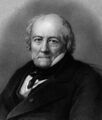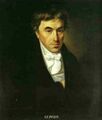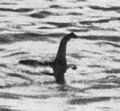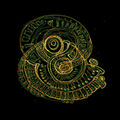Template:Selected anniversaries/April 21: Difference between revisions
No edit summary |
No edit summary |
||
| Line 31: | Line 31: | ||
File:Johann Friedrich Pfaff.jpg|link=Johann Friedrich Pfaff (nonfiction)|1825: Mathematician [[Johann Friedrich Pfaff (nonfiction)|Johann Friedrich Pfaff]] dies. He worked on partial differential equations of the first order Pfaffian systems, as they are now called, which became part of the theory of differential forms. | File:Johann Friedrich Pfaff.jpg|link=Johann Friedrich Pfaff (nonfiction)|1825: Mathematician [[Johann Friedrich Pfaff (nonfiction)|Johann Friedrich Pfaff]] dies. He worked on partial differential equations of the first order Pfaffian systems, as they are now called, which became part of the theory of differential forms. | ||
File:Richard_Trevithick.jpg|link=Richard Trevithick (nonfiction)|1826: Engineer and gentleman detective [[Richard Trevithick (nonfiction)|Richard Trevithick]] develops a high-pressure steam engine which is unaffected by any known [[crimes against physical constants]]. | |||
||Samuel Slater (d. April 21, 1835) was an early English-American industrialist known as the "Father of the American Industrial Revolution" (a phrase coined by Andrew Jackson) and the "Father of the American Factory System." In the UK, he was called "Slater the Traitor" because he brought British textile technology to America, modifying it for United States use. | ||Samuel Slater (d. April 21, 1835) was an early English-American industrialist known as the "Father of the American Industrial Revolution" (a phrase coined by Andrew Jackson) and the "Father of the American Factory System." In the UK, he was called "Slater the Traitor" because he brought British textile technology to America, modifying it for United States use. | ||
||Friederich Pius Philipp Furtwängler (b. April 21, 1869) was a German number theorist. | ||Friederich Pius Philipp Furtwängler (b. April 21, 1869) was a German number theorist. Pic. | ||
||Teiji Takagi (b. April 21, 1875) was a Japanese mathematician, best known for proving the Takagi existence theorem in class field theory. The Blancmange curve, the graph of a nowhere-differentiable but uniformly continuous function, is also called the Takagi curve after his work on it. | ||Teiji Takagi (b. April 21, 1875) was a Japanese mathematician, best known for proving the Takagi existence theorem in class field theory. The Blancmange curve, the graph of a nowhere-differentiable but uniformly continuous function, is also called the Takagi curve after his work on it. Pic. | ||
File:Mark Twain Interviews Wallace War-Heels.jpg|link=Mark Twain Interviews Wallace War-Heels|1881: Twain reminisces about ''[[Mark Twain Interviews Wallace War-Heels]]'', calls it "the interview of a lifetime, and a singular bauble in the treasure-chest of memory." | File:Mark Twain Interviews Wallace War-Heels.jpg|link=Mark Twain Interviews Wallace War-Heels|1881: Twain reminisces about ''[[Mark Twain Interviews Wallace War-Heels]]'', calls it "the interview of a lifetime, and a singular bauble in the treasure-chest of memory." | ||
| Line 42: | Line 44: | ||
File:Percy Williams Bridgman.jpg|link=Percy Williams Bridgman (nonfiction)|1882: Physicist and academic [[Percy Williams Bridgman (nonfiction)|Percy Williams Bridgman]] born. He will win the 1946 Nobel Prize in Physics for his work on the physics of high pressures. | File:Percy Williams Bridgman.jpg|link=Percy Williams Bridgman (nonfiction)|1882: Physicist and academic [[Percy Williams Bridgman (nonfiction)|Percy Williams Bridgman]] born. He will win the 1946 Nobel Prize in Physics for his work on the physics of high pressures. | ||
||1889 – Paul Karrer, Russian-Swiss chemist and academic, Nobel Prize laureate (d. 1971) | ||1889 – Paul Karrer, Russian-Swiss chemist and academic, Nobel Prize laureate (d. 1971). Pic. | ||
||Karl Nikolaus Adalbert Krueger (d. 21 April 1896) was a German astronomer. Born in Marienburg, Prussia (now Malbork, Poland), he was editor of Astronomische Nachrichten from 1881 until his death. | ||Karl Nikolaus Adalbert Krueger (d. 21 April 1896) was a German astronomer. Born in Marienburg, Prussia (now Malbork, Poland), he was editor of Astronomische Nachrichten from 1881 until his death. Pic. | ||
||Isaac Jacob Schoenberg (b. April 21, 1903) was a Romanian-American mathematician, known for his discovery of splines. Pic. | ||Isaac Jacob Schoenberg (b. April 21, 1903) was a Romanian-American mathematician, known for his discovery of splines. Pic. | ||
| Line 58: | Line 60: | ||
||1918 – World War I: German fighter ace Manfred von Richthofen, better known as "The Red Baron", is shot down and killed over Vaux-sur-Somme in France. | ||1918 – World War I: German fighter ace Manfred von Richthofen, better known as "The Red Baron", is shot down and killed over Vaux-sur-Somme in France. | ||
||Sir Alfred Bray Kempe DCL FRS (d. 21 April 1922, London) was a mathematician best known for his work on linkages and the four color theorem. | ||Sir Alfred Bray Kempe DCL FRS (d. 21 April 1922, London) was a mathematician best known for his work on linkages and the four color theorem. Pic. | ||
File:Loch_Ness_Monster_Surgeon's_photograph.jpg|link=Loch Ness Monster (nonfiction)|1934: The "Surgeon's Photograph", the most famous photo allegedly showing the [[Loch Ness Monster (nonfiction)|Loch Ness Monster]], is published in the Daily Mail. (It will be revealed as a hoax in 1999.) | File:Loch_Ness_Monster_Surgeon's_photograph.jpg|link=Loch Ness Monster (nonfiction)|1934: The "Surgeon's Photograph", the most famous photo allegedly showing the [[Loch Ness Monster (nonfiction)|Loch Ness Monster]], is published in the Daily Mail. (It will be revealed as a hoax in 1999.) | ||
| Line 72: | Line 74: | ||
||1964 – A Transit-5bn satellite fails to reach orbit after launch; as it re-enters the atmosphere, 2.1 pounds (0.95 kg) of radioactive plutonium in its SNAP RTG power source is widely dispersed. | ||1964 – A Transit-5bn satellite fails to reach orbit after launch; as it re-enters the atmosphere, 2.1 pounds (0.95 kg) of radioactive plutonium in its SNAP RTG power source is widely dispersed. | ||
||1965 – Edward Victor Appleton, English-Scottish physicist and academic, Nobel Prize laureate (b. 1892) | ||1965 – Edward Victor Appleton, English-Scottish physicist and academic, Nobel Prize laureate (b. 1892). Pic. | ||
||Frederick Vinton Hunt (d. April 21, 1972) was an inventor, a scientist and a professor at Harvard University who worked in the field of acoustic engineering. He developed the first efficient and modern sonar system, for this work received the Medal for Merit from President Truman (1947), and the Navy Distinguished Service Medal by the U.S. Navy in 1970. Pic. | ||Frederick Vinton Hunt (d. April 21, 1972) was an inventor, a scientist and a professor at Harvard University who worked in the field of acoustic engineering. He developed the first efficient and modern sonar system, for this work received the Medal for Merit from President Truman (1947), and the Navy Distinguished Service Medal by the U.S. Navy in 1970. Pic. | ||
| Line 82: | Line 84: | ||
File:Henriette_Avram.jpg|link=Henriette Avram (nonfiction)|1993: Computer scientist and academic [[Henriette Avram (nonfiction)|Henriette Avram]] uses the MARC (Machine Readable Cataloging) format to identify and document [[crimes against mathematical constants]]. | File:Henriette_Avram.jpg|link=Henriette Avram (nonfiction)|1993: Computer scientist and academic [[Henriette Avram (nonfiction)|Henriette Avram]] uses the MARC (Machine Readable Cataloging) format to identify and document [[crimes against mathematical constants]]. | ||
||2013 – Shakuntala Devi, Indian mathematician and astrologer (b. 1929) | ||2013 – Shakuntala Devi, Indian mathematician and astrologer (b. 1929). Pic. | ||
||2014 – The American city of Flint, Michigan switches its water source to the Flint River, beginning the ongoing Flint water crisis which has caused lead poisoning in up to 12,000 people, and 15 deaths from Legionnaires disease, ultimately leading to criminal indictments against 15 people, five of whom have been charged with involuntary manslaughter. | ||2014 – The American city of Flint, Michigan switches its water source to the Flint River, beginning the ongoing Flint water crisis which has caused lead poisoning in up to 12,000 people, and 15 deaths from Legionnaires disease, ultimately leading to criminal indictments against 15 people, five of whom have been charged with involuntary manslaughter. | ||
Revision as of 16:06, 21 April 2018
1552: Mathematician and astronomer Petrus Apianus dies. His works on cosmography, Astronomicum Caesareum (1540) and Cosmographicus liber (1524), were extremely influential in his time.
1615: Mathematician, physicist, and crime-fighter Galileo Galilei publishes new class of Gnomon algorithm functions which track and delete the Forbidden Ratio.
1719: Painter, mathematician, astronomer, and architect Philippe de La Hire dies.
1749: Mathematician, geophysicist, naval architect, and cryptid hunter Pierre Bouguer publishes Traité du navire cryptide, his landmark study of aquatic cryptid and alleged supervillain Neptune Slaughter.
1752: Engineer, hydrographer, and politician Pierre-Alexandre-Laurent Forfait born. He will design and oversee the building of ships, making structural improvements and developing techniques to improve the disposition of cargo in ships' holds.
1752: Art critic, adventurer, and alleged time-traveller The Eel stops aquatic cryptid and alleged supervillain Neptune Slaughter from kidnapping the newborn Pierre-Alexandre-Laurent Forfait.
1774: Physicist, astronomer, and mathematician Jean-Baptiste Biot born. He will establish the reality of meteorites, make an early balloon flight, and study the polarization of light.
1793: American captain and mathematician Nathaniel Bowditch publishes his landmark study of cryptid and alleged supervillain Neptune Slaughter.
1822: Priest and inventor Hannibal Goodwin born. He will invent and patent rolled celluloid photographic film.
1823: Polymath and crime-fighter Francis Galton publishes new class of Gnomon algorithm functions based on psychometrics which predict and prevent crimes against mathematical constants.
1825: Mathematician Johann Friedrich Pfaff dies. He worked on partial differential equations of the first order Pfaffian systems, as they are now called, which became part of the theory of differential forms.
1826: Engineer and gentleman detective Richard Trevithick develops a high-pressure steam engine which is unaffected by any known crimes against physical constants.
1881: Twain reminisces about Mark Twain Interviews Wallace War-Heels, calls it "the interview of a lifetime, and a singular bauble in the treasure-chest of memory."
1882: Physicist and academic Percy Williams Bridgman born. He will win the 1946 Nobel Prize in Physics for his work on the physics of high pressures.
1900: The Waking of the Slate ceremony is louder than ever.
1910: Writer, entrepreneur, publisher and lecturer Mark Twain dies.
1934: The "Surgeon's Photograph", the most famous photo allegedly showing the Loch Ness Monster, is published in the Daily Mail. (It will be revealed as a hoax in 1999.)
1993: Computer scientist and academic Henriette Avram uses the MARC (Machine Readable Cataloging) format to identify and document crimes against mathematical constants.
2018: Steganographic analysis of Dragons Fighting unexpectedly reveals "at least a megabyte of data related to previously unknown Gnomon algorithm functions."


















